Places in Japan: One Fantastic Day in Historic Takayama
Reesan from loneleeplanet has started up a new blogging festival called J-Festa to showcase the best of Japan, and this month’s theme is “Places in Japan.” I thought I would use the opportunity to feature a place that I visited last summer. At the time, I was taking advanced Japanese classes at the Kyoto Consortium for Japanese Studies, and as part of the Critical Language Scholarship (CLS), I was given a free one-week Japan Rail Pass. Those of you who have been to Japan know that this is an *amazing* opportunity. With a Japan Rail Pass, you can go pretty much anywhere in the country, and you can even ride the famous shinkansen bullet trains (though not the very fastest class). The only catch?
I only had 36 hours to make my trip.
You see, CLS had already planned a packed itinerary for us that included mainstays such as Hiroshima, Miyajima, Tokyo, and Kamakura, so we only had a little bit of free time with which to use our rail passes.
So, I decided to visit Takayama, one of Japan’s best preserved “traditional” towns and a place I had been wanting to see for quite some time. Takayama was established in the late 16th century as the castle town of the Kanamori clan and came under the control of the Tokugawa shogunate in 1692. The current town still retains the layout from the Kanamori period, and it has over a dozen museums featuring elements of traditional life, as well as a number of sake breweries, markets, and other interesting sights. Although Takayama is a pretty small place, and I was only there for a day, I saw so many interesting things that I could easily fill a half a dozen posts with my photos and stories. So, I’ll try to hit the highlights and give you an overview of what this great place has to offer.
After a quick trip from Kyoto to Nagoya, I connected to the JR Takayama limited express line. The train ride through the mountains of Gifu was simply gorgeous (although fast trains and low light don’t make for particularly good photographs.) Much of our journey took place along the river, and we got to see a number of pretty dams and waterfalls.
I arrived in Takayama after nightfall and made my way to my accommodations for the evening. Instead of staying in a typical hotel, I decided to stay at the Zenkoji Temple Inn, a real, functioning branch of Nagano’s famous Zenko-ji temple that had been converted to include hostel style accommodations.
When I arrived, I was escorted through a long hallway surrounding a courtyard garden to a very cute Japanese-style private room. My favorite thing about the room was the shapes of the various windows—the one on the wall to the right (not visible) was shaped like a crescent moon. When I woke up in the morning and the room was dark except for these windows flooded with white light, it made for quite the atmosphere.
Anyway, if you’re looking for a reasonably priced and atmospheric place to stay (and don’t mind communal bathrooms and the like), I’d recommend this place.
When I woke up in the morning, I went straight out to explore the town. I was particularly keep to visit some of the asa-ichi (morning markets) that take place every day from 7 am until noon. I went to the Miyagawa Morning Market along the east bank of the Miyagawa river. Local farmers sold produce and other handmade items, and there were also a number of shops selling local souvenirs.
The most interesting of the souvenirs was the saru-bobo (literally, “baby monkeys”), dolls of colored (typically red) fabric with pointy limbs and featureless faces. In earlier days, grandmothers in this then-impoverished town used to make these kinds of dolls for children. Since they hoped for the happiness and good health of the children, local vendors tell you that you too can be happy, if you have one of these dolls.
One of the key highlights of Takayama is just walking down its streets, which are still lined with traditional low-roofed buildings. You can look at the homes of former merchants, many of which have been restored, or you can wander into museums featuring a wide variety of work by local craftspeople. The two shots below were taken at the Hirata Folk Art Museum, a restored house filled with everything from carvings to pottery to antique hair decorations.
Being the museum enthusiast that I am, I also visited two more museums, the Takayama Matsuri Yataikaikan and the Nikko-kan, both of which reside on the grounds of a hillside shrine called Sakurayama Hachimangu. The Takayama Matsuri Yataikaikan displays a rotating selection of the yatai (floats) used in the annual Takayama Matsuri (Festival). Some of these floats date back to the 17th century and feature incredibly ornate carvings, lacquer, and metalwork. Some also feature mechanical puppets that perform complicated tricks and routines.
I have to say that I found the Nikko-kan incredibly impressive. Nikko is a very famous Japanese city located about 140 km north of Tokyo, home to Nikko Tosho-gu, a Shinto shrine that houses the remains of Tokugawa Ieyasu. Takayama’s Nikko-kan houses a one-tenth scale replica of this incredibly ornate 28-building temple complex. It took 15 years and 33 carpenters to create this replica during the Taisho era (1912-1925). The replica was shown in various parts of the United States after World War II and at the Aoi Exposition in Okazaki in 1987. After that, the replica was designated to be stored at the Sakurayama Hachimangu shrine “eternally” by the owner’s will.
And just to take things one step further, the Nikko-kan has a computerized lighting system that reproduces the day from sunrise to sunset at Nikko. It’s almost like really being there!
Having made a pretty good attempt at seeing things in Takayama proper, I then caught a bus out of town to Hida-no-Sato—also known as the Hida Minzoku Mura Folk Village—a huge open-air museum of almost 30 traditional farmhouses built in the unique architectural style of Japan’s mountainous areas.
This area’s signature architectural style is the thatch-roofed gassho-zukuri, which look utterly unlike the structures you see most other places in Japan. Gassho-zukuri means “clasped hands,” and these buildings have very steep roofs designed to allow rain and snow to fall straight off, preventing water from getting through and preventing the thatch from getting too wet and beginning to rot. The buildings that now reside in the Hida Folk Village used to be separated by miles and miles—they were transferred from their original locations to the open-air museum for preservation, so they reflect a number of different styles. Visitors can actually go inside most of the buildings, which are filled with displays of traditional tools or crafts.
After a couple of hours wandering around the open-air museum, I took the bus back to town and concluded my time in Takayama by sampling one of its famous foods: Hida-gyu (Hida beef). You’ve heard of the wonderfully delicious Kobe beef, right? Well, Kobe beef is just one type of wagyu, several breeds of Japanese cattle genetically predisposed to intense marbling and a high percentage of unsaturated fat. There are five different areas that are home to the major breeds of wagyu, and Hida is one of them. I’m a huge fan of yakiniku (bite-size pieces of meat grilled meat, or “Japanese barbeque”), so I decided to have my Hida-gyu yakiniku-style. Here’s a shot of my dinner, pre-grilling:
Makes me hungry just looking at it!
And with that, you have the story of my very quick, very productive, and very fun 36-hour excursion to Takayama. If you’re looking for a bit of the traditional, and you’d like to see something a little less common (or if it’s really hot and you’re looking for someplace a few degrees cooler than the Kansai region), I’d really recommend this place. It’s small, but it’s packed with quaint and interesting things to see and do. I was really impressed with how tourist-friendly it was—even if you don’t speak any Japanese, you’ll be fine. Things are well marked, and even if the locals don’t speak English, they’re incredibly friendly and seem to genuinely want all of their tourist to have a good time. (You can imagine how important tourism is to this area.) If I had more time, I would have spent more time in the museums, checked out a couple of the sake breweries, and maybe gone out to surrounding places like Shirakawa-go.
Or, if you’re on the other side of Honshu, Kanazawa is another traditional town that really gives you a feel for “old” Japan.
The rest of the featured entries for July’s J-Festa are now posted here. Check it out for interesting articles on 27 other places in Japan!
I’ve also submitted this post to Travel Photo Thursday, another fun blogging showcase that I recently stumbled upon. Happy blogging!
Note: This post was Freshly Pressed on July 22, 2011. Thank you all for stopping by–I look forward to reading your comments and to checking out your blogs!
Related Posts:

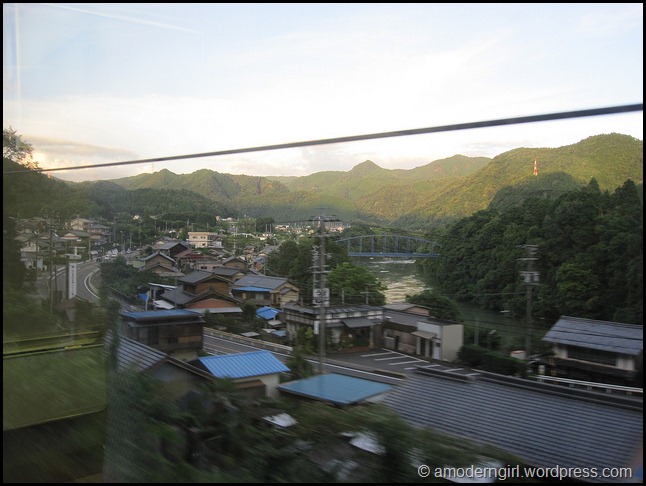
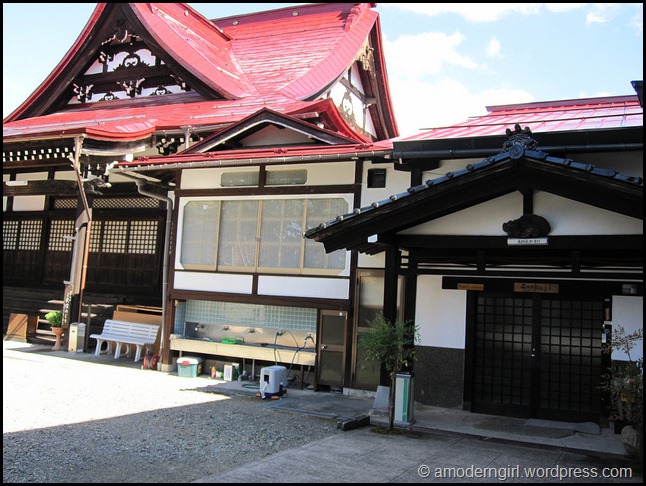
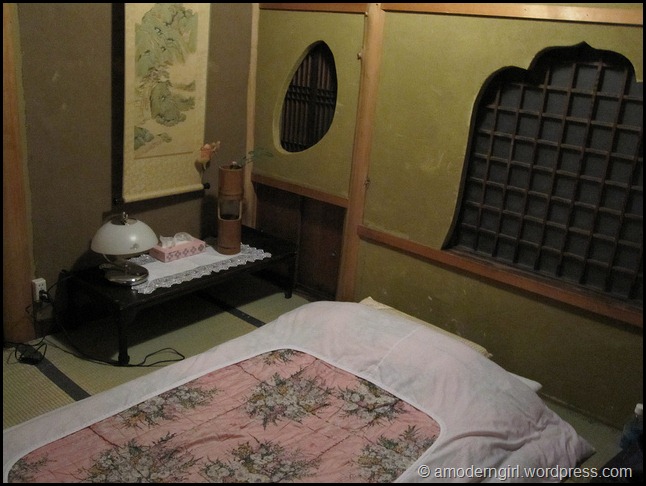
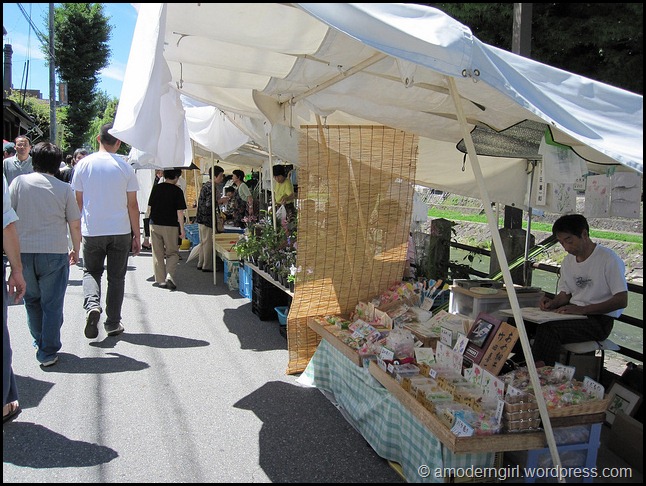


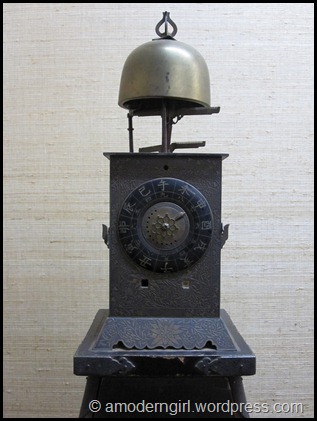

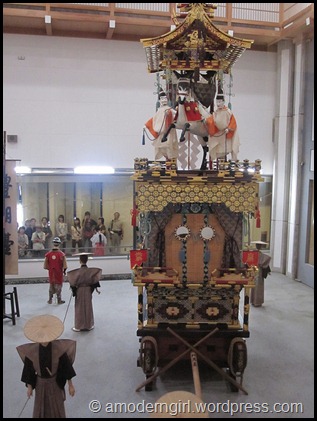


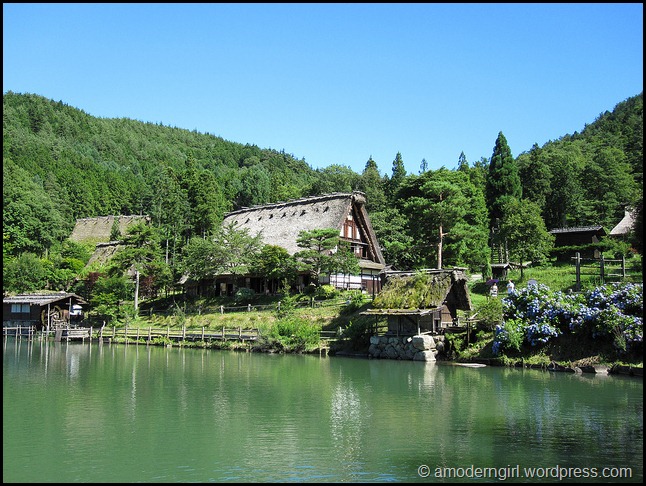
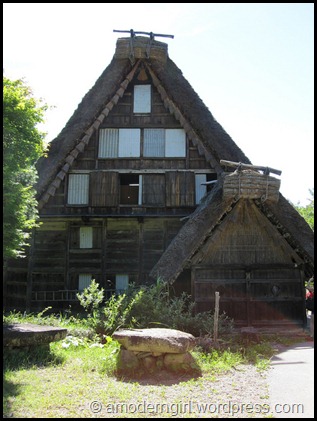

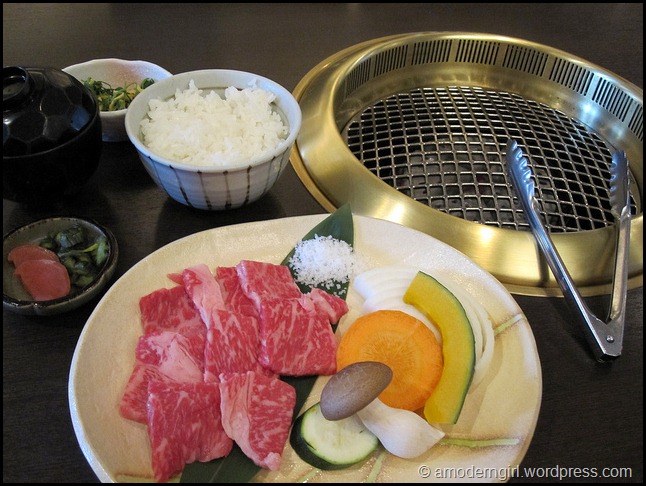
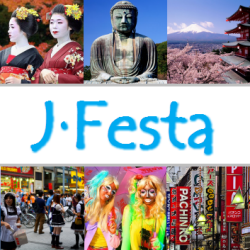

Great article :)
I’m glad that you enjoyed it–thanks for stopping by!
nice post
thank you for participating in j-festa! great article. i am now inspired to take a trip to takayama! ^_^
Thanks for hosting! It was good to have an excuse to actually write this up. I look forward to future editions!
What an interesting blog about a place I’d never even heard of with a fine set of pictures to go along with it. It’s nice to find you.
Thanks so much for stopping by! I really wanted to be write about something a little less common–Takayama isn’t obscure by any means, but it’s often not a place that the casual traveler will have heard of. Glad you enjoyed the post!
YAKI-NIKU!!!!!!!!! (You just induced a drool fest.)
I wanted to get to Takayama, but never made it. Thanks for sharing the photos. Beautiful. XD
Oh, you are a woman after my own heart! Even though I’m living in Japan, there hasn’t been enough yakiniku in my life–I don’t have any carnivorous companions! Isn’t that sad? And though I’m fine with eating solo, it really is a social food.
Great post! I’m ready to go to Japan and visit a friend now ;)
You should! Japan is particularly in need of tourism right now–and it’s safe to visit the vast majority of the country, in contrast to what some people might think. Thanks for stopping by!
These photos are beautiful! Even if they weren’t, though, just seeing the one with the Japanese BBQ would make me want to go there…yummy! :)
Congrats on being Freshly Pressed!
And thanks for letting me know–I hadn’t realized! How exciting!
I’m glad you liked the photos–I think that half the fun of going places is being able to show/tell people about it afterward. :) And yes, the BBQ was definitely a highlight!
What fun pix — looks like a spectacular experience!
:)
It really was! Thanks for reading!
Reading about Japan/seeing photos always makes me miss it so much. Lovely post!
Japan is such a great place–did you live here before? I really love it. Thanks so much for stopping by!
I lived in Tokyo during the summer of ’05 for a study abroad program. “Waseda! Waseda!”
This is awesome! I definitely will consider adding this to my itinerary for next year. And great photos! I don’t think 36 hours is enough for me either; I’d be stuck taking pictures everywhere.
So what would you have had to spend if you didn’t have a rail pass for the day?
Thanks for the comment! The cost totally depends on where you’re coming from. According to my trusty Lonely Planet, once you’re in Nagoya (the major connection point), it’s 5,670 yen (~ US $72) to get to Takayama. So, if you’re in the Kansai region (Osaka, Kyoto, Nara, Nagoya) or plan to pass through Takayama to go to Toyama or Kanazawa, it’s not too bad. If you’re coming from Tokyo and plan to take trains though, the price can vary a lot, depending on how fast you want to get from Tokyo to Nagoya. A cheaper option would be to catch a highway bus for 6,500 yen (~$82) from Tokyo to Takayama.
Takayama tends to make the most sense as a side trip from Kansai (I was in Kyoto, for example) or as part of a trip through the Japan Alps region to the northern Sea of Japan coast. Otherwise, it can be kind of out of the way, since it’s in the mountains and not on the more commonly traveled Tokyo-Kansai-Hiroshima route along the southern coast of Honshu.
Nice post :) My husband actually went to Nikko and saw the Tosho-gu Shrine. He spent two weeks in Japan all in all. I didn’t go, but I recognized it because I am putting his picture album together for him. Neat to see that museum with the replica!
I thought the replica was really neat! It’s amazing how intricate the whole thing was–you could really see the care and craftsmanship involved. But of course, the real thing is even better. :) It’s great that your husband got to visit Nikko–it’s probably one of the most impressive sets of buildings in Japan, since the architectural style is so very ornate.
Thanks for stopping by!
Cool post! I like the pictures, make me want to visit the place too!
Is it a really touristic place? I always try to avoid those ;p
But still, the pictures still make me wanna visit.
It depends on what you mean by touristy. Since it is a “traditional” place, Takayama doesn’t have a lot of business besides tourism and agriculture, so the townspeople put a lot of work into making the place easy to navigate, creating museums, making sure there are lots of shops, etc. So, it is touristy in the sense of being targeted toward tourists. But it wasn’t very crowded when I visited in late July–most of the tourists I saw were Japanese, not foreign. And most of the foreign tourists were backpacker types. So, it’s different from what I would consider the really touristy sites in Kyoto, Nara, Tokyo, Hiroshima, Miyajima, etc. I think people who go to Takayama are generally looking for a somewhat “deeper” experience of Japan–most of them have already seen a lot of the country or are traveling for long periods of time.
Sounds like you’re having a lot of fun! I would really like to visit Japan one day.
You should! Japan is particularly in need of tourism right now–and it’s safe to visit the vast majority of the country, despite what some might think. Thanks for reading!
You fit a lot into 36 hours! Congrats on being Freshly Pressed.
Thanks! This was one of my solo trips–I love going places with friends, but sometimes traveling alone is great because you can set your own pace. In this case, I decided to pack my day full of fun activities from early in the morning until late at night. I think it worked out nicely. :)
i’d like to hit up the market there! looks fabulous. thanks for sharing.
http://www.icouldntmakethisshitup.wordpress.com
Thanks for posting your amazing trip and terrific photos. One of my daughters is planning a trip to Japan in the future, I’ll definitely show her your blog.
Beautiful pictures and you are a great writer.
Nice Share… :-)
Wonderful photos!
Its amazing!!! thanks for sharing with us!!!
OH MAN I want that barbeque!! Japan is high on my travel list, and only partly for food-related reasons. Great shots and thanks for sharing.
Have you really deleted this blog? I hope not! I really enjoyed this story. It made me “homesick” for Japan (natsukashii!)
Thanks for stopping by one of my blogs. Here’s a post from it that you might especially enjoy:
Nara in the summer heat: https://berkshireviews.wordpress.com/2011/07/16/weekly-photo-challenge-hot-1/
Looking at Japan like this… doesn’t look like Japan but it does… hmm
I lived in Japan for years and years but didn’t visit anywhere like this
Japan has got so much stuff in such a small island would be interesting to go back again… :)
I wanna see more! x
Takayama is such a lovely place!
Thank you for this adventurous post, I feel like part of me was able to travel with you. And you have successfully made me hungry!
nice sharing –
you wrote a very detail sharing..
You know, this is something that I always wanted to do. I love Asian culture and the connection that it holds to the surroundings it has. I love how Japan has come to preserve their culture. Thank you for this beautiful post.
Congratulations on your enjoyable visit to Japan. I am an American who has lived in and out of Japan for more than 15 years. I currently reside in Kamakura prefecture.
Wow nice place ! We are in Tokyo for about 2 yrs nw but are yet to visit Takayama ! Thanks to u i came to know of this place and J-Festa ! Congrats on FP ! Have a great day !
Fantastic, such amazing photographs. All in all a great read. Japan looks like a fantastic place, I hope my travels will lead me there one day.
Ive been here too! One of my most memorable trips while in Japan! Thanks for sharing! :)
nice pics. I am planning for a Japan tour next year. :)
Hope you enjoyed yourself there :)
Great post, i like your photos.
I found in my brief visit to Kyushu that Japanese people are so spatially sensitive and aware of their surroundings generally. It feels as though everything is teeming with life and regarded in such a respectful manner.
Great piece. im hoping to go to Japan soon, its insane how the media made it look like it was Chernobyl, but its really just ok right now and im soo excited to go..
Wow… that’s interesting. With all those pictures and complete explanation on the article, it’s such a great combination. Have you travel to Hiroshima? I’d like to read about that. I really want to visit Hiroshima by myself. But if I can read it through an eye of a traveler, it could be a good start. I guess. ;)
Takayama is a beautiful place. The photographs are ample proof of the beauty of this place.
WOW~~ What a gorgeous place. I can’t wait to take that trip myself! it looks amazing and beautiful and soooo big!
your story is amazing..
lucky my money still not enough to go travel..
=.=
Thanks for this great post! Now I just want to discover Takayama on my next trip!
Great article & photos especially of the markets! We didn’t have time to go to Takayama when we went to Japan 2 years ago but maybe next time. Every city in Japan is just lovely – even just the simple pleasure of walking along every neighborhood was amazing. Definitely one of my favourite countries to visit!
Very good blog…..
Amazing photos! lovely
nice photos :-)
Great blog!
かわい- ! ;x
Nice ^^
What an great excursion. The history, architecture, food – it all sounds very interesting from your article. Very nice photos — really seem to capture the character of Takayama.
green photo, nice …
I love seeing the Japan that is way beyond Tokyo. Excellent photos and story – thanks so much for sharing. A very beautiful country!
Brilliant blog post! came across this from the WP dashboard. I stayed at the same temple when I was in Takayama! The beef was the best I’ve ever tasted too!
Wasn’t the temple inn interesting? I loved the combination of functioning temple and hostel–it made for a fun experience.
And yes, the beef was truly amazing. Super flavorful. Super delicious. Seriously, it makes me hungry just thinking about it. :)
Thanks for stopping by!
I am an interest person to Japan, your ecripts are tramendiouse and all of glamariouse to go through. All very intersting.
Pingback: Places in Japan | japingu
love your blog about Takayama. its enticed me more to want to go to japan. i’ve always wanted to visit japan and just steep in the culture and food.
I have not been in abroad…and even I am not extrovert …but this made me ask why I am not extrovert?…Thanks for sharing…it feels like I was also with you.
Oh, I’m not an extrovert either. :) But I still love to travel and see new things. I usually go with a friend, but I went to Takayama by myself, and I thought it was a nice chance to away from it all for a little while. I’m glad you enjoyed the post!
I’m so jealous. It looks wonderful. I love living vicariously though others pics!
さるぼぼ、カワイイ (。^一^)b
とてもかわいいと思った。コメントありがとう!
someday well know!
Great post! You certainly used your 36 hours really well!! :D
I would love to visit Takayama some day~
muy bueno
Japan looks wonderful right now, i might go adventuring there sometime!!
OMG! I’ve been to Japan too! I know, it’s like, SO cool! I’ve been skiing in Niseko, and I’ve also been to Tokyo and Kyoto. I love Japan, but I still might wait a couple of years before going again because of the nuclear disaster and radiation.
this is a wonderful post, I enjoyed it very much, i am form europe and i like japan som much, your history and traditions
good luck
Nice blog of japan
very helpful i really need this such of sharing information i will be Tokyo on February next year.. i wont miss this… tq
Oh you are making me miss Japan SO badly!! Thanks for the teaser! =)
-Yu
Wow! Thanks so much for posting this and all the great descriptions. I did a significant portion of my thesis research about the traditional carpenters of the Takayama area and the titles Hida no kami 飛騨守 or Hida no takumi/Hidakō 飛騨工 (governor of Hida/carpenter of Hida) as an honor bestowed by the court on particularly skilled carpenters. The practice began around the 7th century (beginning with artisans actually from the Takayama area of Hida) and continued well into the early modern era as just a nominal title for carpenters of great talent. But I never actually knew much about the Takayama area itself so this was really neat! Thanks for sharing!
That sounds really interesting! I don’t know very much about the history/practice of carpentry in the area, but you can definitely sense how important that kind of craft is, just by walking around and seeing the various sights. It’s a cute little town, if you ever have time to visit. Thanks for stopping by!
Nice shots! Japan is such a beautiful place
nice informative post about Japan.
Japan is still one of those places I really need to visit. Hope I’ll have the chance someday.
What a great post! Looks like you had an amazing adventure over your whirlwind 36 hours. I’ll put this on my list to visit the next time I’m in Japan.
Thanks for posting to Travel Photo Thursday.
I always see signs for Takayama when I stay at J-Hoppers in Osaka. Now I know what’s there! Great post, and congrats on being freshly pressed!
very nice. thnks
Good job. I have visited this place quite a few times. Impressed. You did very well on this trip. I wonder about the photo of the museum. Did you sneak snap those pics? Last time I was there people weren’t allowed to take pictures there. Anyway, good job.
Thanks for your comment! I didn’t sneak those pictures–I took my time taking a lot of shots, and I have a fairly noticeable SLR camera, so either they’ve changed their policy or they just didn’t want to interrupt my fun. ;)
Great pics and nice article.
Amazing! :)
In Indonesia, you can find the most interisting place too, like Bali off course, there’s alot of amazing place :)
i like japan… very nice plllaa cee to live in but the cost too high
Great article! This trip sounds like a whole lot of fun. Thanks for sharing.
Nice picture. Japan very nice!
i like it,.
takayama was certainly one of my favourite place!
great blog :)
Even though we were just in Takayama a couple months ago, you made us feel nostalgic. Takayama was one of our favorite stops during the month we spent in Japan. (We had a three week JR Rail pass, which, as you can imagine, was AMAZING!)
I went to Takayama with my best friend a couple of years ago. It’s such a lovely traditional little town, we borrowed some bikes from the place we were staying at and rode around exploring. We also went to one of the Japanese bath houses too!
I’ve been meaning to read this for days… so glad I finally had time! I’ve read the occasional article on gassho-zukuri architecture, but it was great to read about so many other things to see and do from a visitor’s perspective. Now it’s definitely on my list of places to visit. :)
lovely Takayama! Thanks alot for sharing!
Pingback: Hasedera Temple – Kamakura, Japan « Blog Archive « Photographer Will Travel …
I enjoyed reading this post… Great report.
Pingback: Japan Memoirs « Cow Tales By a CowGirl Cook
I always wondered what the saru-bobo was. I gave one to a family member after a Japanese friend told me it was a ‘department store mascot.’ Whaaa..? I like your explanation better~
Love the post and congrats on FP!
Pingback: Wordless Wednesday #22: Honolulu from a Hotel Room | A Modern Girl / モダンガール
This place looks simply stunning! I should try and go there next time, although that’ll be this winter. Do you think it’d be a nice place to visit in December?
It’s in the mountains, so it’ll be really cold and snowy. (There’s a reason that all of the buildings are designed for heavy winters.) Personally, I would wait for warmer weather–but ask a few other people and see what they think!
Pingback: Looking Back at Post A Week 2011 | A Modern Girl / モダンガール
Pingback: A Modern Girl’s Year in Blogging: 2011 Edition | A Modern Girl / モダンガール
Pingback: Yabusame: The Japanese Art of Horseback Archery « A Modern Girl / モダンガール
Pingback: A Modern Girl in the Japanese news! « A Modern Girl / モダンガール
Pingback: Back in Tokyo! | A Modern Girl / モダンガール
Pingback: Shigenobu Okuma: Founder of Waseda University | A Modern Girl / モダンガール
Pingback: A Modern Girl’s Year in Blogging: 2014 Edition | A Modern Girl / モダンガール
Pingback: Five Perfect Places To Visit In Japan - Vacation Rentals Directory